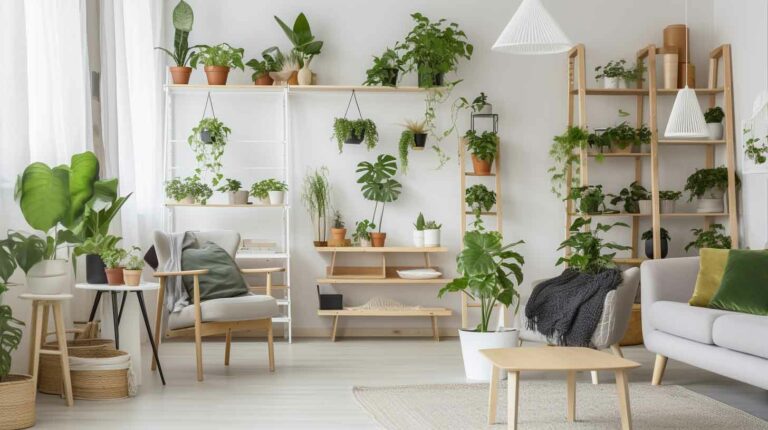Daybed vs Futon: The Ultimate Guide to Choosing the Perfect Multi-Functional Furniture for Your Home
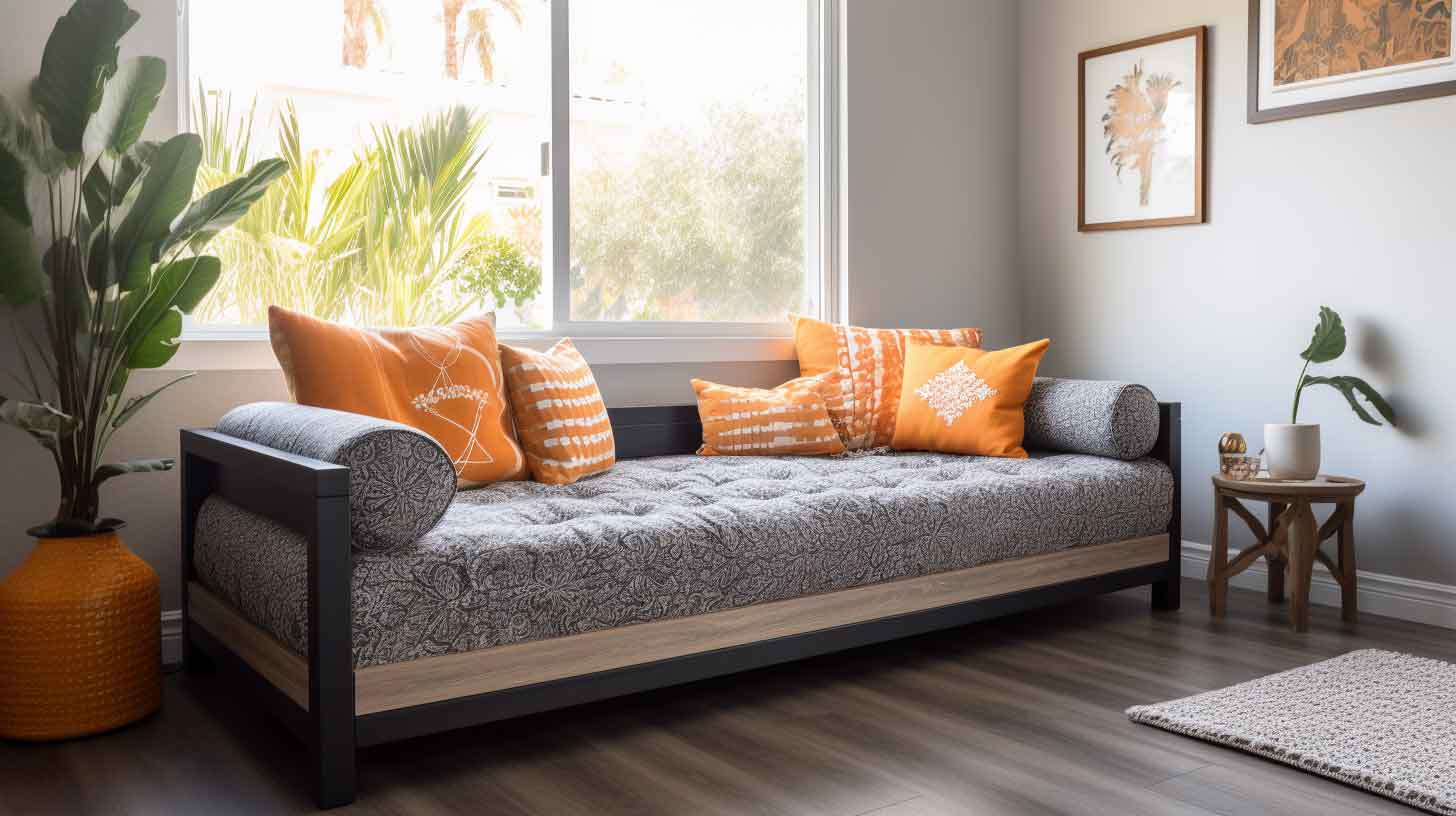
Daybeds and futons are two types of multi-functional furniture that can transform a room from a comfortable sitting area to a cozy sleeping space. Although they both serve similar purposes, their structures, designs, and features differ significantly.
This comprehensive guide will help you understand the differences between daybed vs futon, compare their various features, and ultimately, make an informed decision when choosing the perfect piece of furniture for your home.
What’s a Daybed?
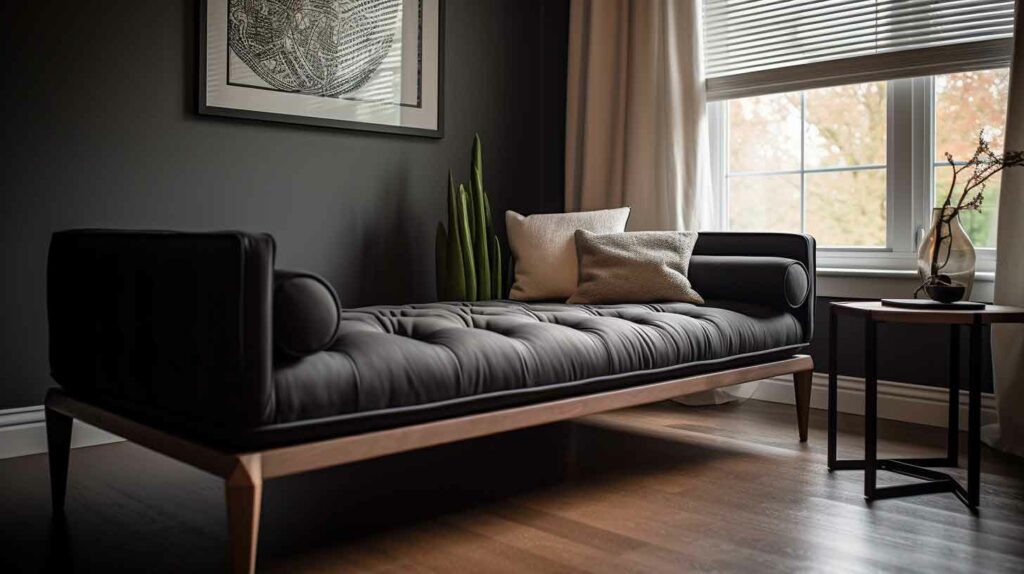
Daybeds have a long history, dating back to ancient civilizations such as Egypt, Greece, and Rome. They evolved over time, taking various forms and styles, and became popular in modern homes as practical and stylish furniture.
Daybed structure and design
Daybed frames can be made from various materials, including metal, wood, and upholstered fabric. Each material offers a unique look and feel, so your choice will depend on your personal taste and interior design preferences.
Daybeds typically accommodate a standard twin-size mattress, providing ample space for a single person to sleep comfortably.
Popular daybed styles
Traditional
Traditional daybeds often feature intricate wood carvings or ornate metalwork, evoking a classic and timeless appeal.
Contemporary
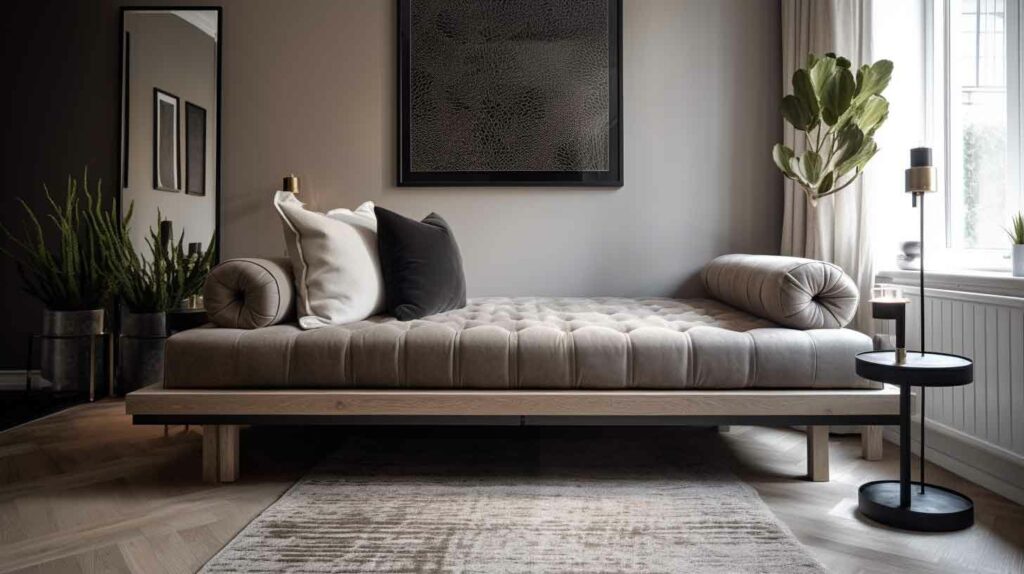
Contemporary daybeds showcase sleek lines and minimalist designs, often using neutral colors and materials to blend seamlessly into modern interiors.
Industrial
Industrial daybeds combine rugged materials, like metal and reclaimed wood, to create a utilitarian and urban aesthetic.
Coastal
Coastal daybeds utilize light-colored materials, such as wicker and distressed wood, to create a breezy and relaxed vibe reminiscent of seaside retreats.
What’s a Futon?
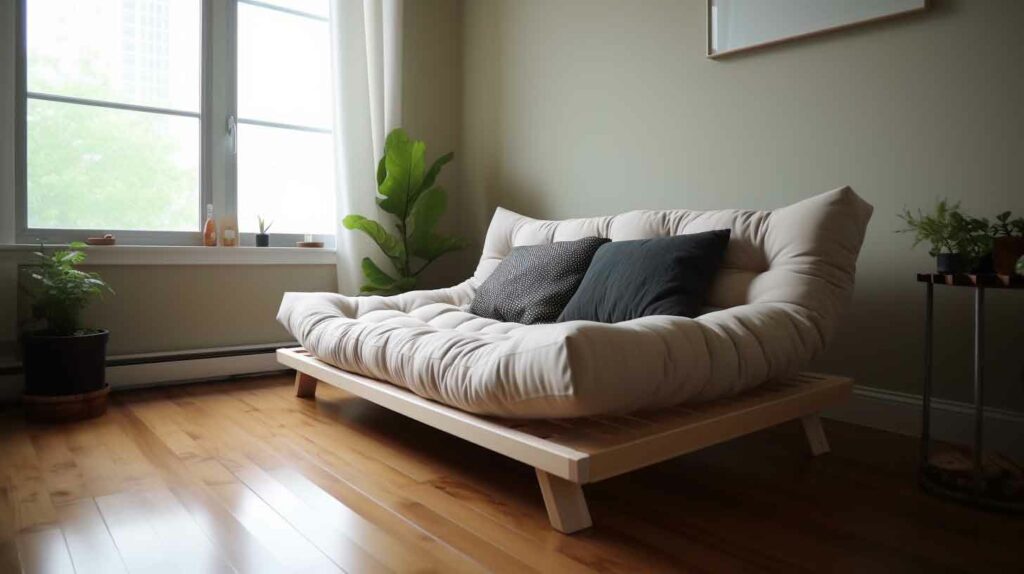
Futons originated in Japan, where they were used as traditional bedding. The concept was introduced to the Western world, and futons quickly became popular for their space-saving and versatile design.
Futon structure and design
Futon frames are typically made from metal or wood and are designed to support a foldable mattress, allowing the futon to convert from a sofa to a bed.
Futon mattresses are thinner and more flexible than traditional mattresses, making them easy to fold and store when not in use.
They are also known for their ability to easily convert from a seating area to a sleeping surface, making them ideal for small spaces and multi-functional rooms.
Popular futon styles
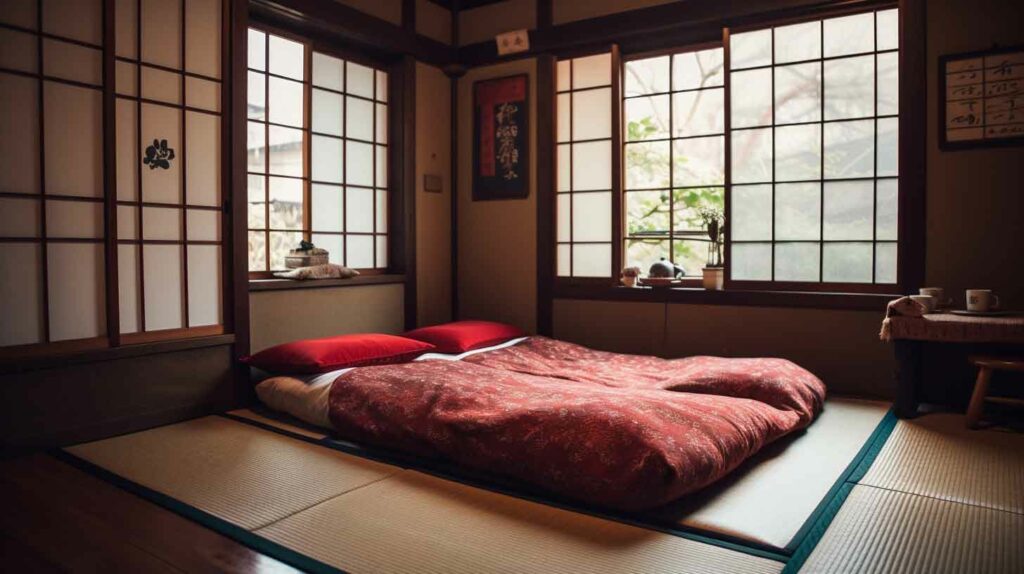
Japanese
Japanese futons maintain the traditional design, with a minimalistic and low-profile structure that is easy to store and transport.
Modern
Modern futons often feature sleek lines, bold colors, and contemporary materials, providing a stylish and functional addition to any room.
Rustic
Rustic futons incorporate natural materials like wood and leather, evoking a cozy and warm atmosphere.
Bohemian
Bohemian futons showcase eclectic designs and vibrant patterns, adding a touch of whimsy and personality to any space.
Comparing Daybeds and Futons
| Feature | Daybed | Futon |
|---|---|---|
| Primary Function | Seating and sleeping | Seating and sleeping |
| Mattress Type | Standard twin-size mattress | Thinner, foldable mattress |
| Convertibility | Not convertible | Easily converts to a bed |
| Space Requirement | Larger footprint | Smaller, compact design |
| Comfort & Support | Generally more comfortable | Less comfortable |
| Aesthetic Appeal | Wide range of styles | Modern, minimalistic styles |
| Assembly & Maintenance | More complex assembly | Easier assembly |
| Price Range | Generally more expensive | More affordable options |
| Versatility | Limited to seating & sleeping | Adaptable for various uses |
| Storage Options | Trundle beds, storage drawers | Storage ottomans, side tables |
Space considerations
Both daybeds and futons are space-saving options, but futons may be more suitable for smaller rooms due to their convertibility and compact design. Daybeds, on the other hand, often have a larger footprint and may require more space to fit comfortably in a room.
Comfort and support
When it comes to comfort and support, daybeds typically offer a more comfortable sleeping experience due to their use of standard twin-size mattresses.
Futons, with their thinner and more flexible mattresses, may not provide the same level of comfort and support, especially for long-term use.
Aesthetic appeal
Aesthetically, daybeds and futons cater to different styles and preferences. Daybeds offer a wide range of design options, from traditional to contemporary, while futons often lean towards modern and minimalistic aesthetics.
Versatility and functionality
Both daybeds and futons are versatile pieces of furniture, but futons offer more flexibility in terms of usage and convertibility.
Daybeds primarily serve as seating and sleeping spaces, while futons can easily transform between a sofa and a bed, making them ideal for multi-purpose rooms.
Assembly and maintenance
Futons typically require less assembly than daybeds and are generally easier to maintain due to their simpler structure.
Daybeds may require more complex assembly and regular maintenance, especially if they have additional features like trundle beds or storage drawers.
Price and budget
In general, futons tend to be more affordable than daybeds, making them an attractive option for those on a tight budget.
However, the price range for both daybeds and futons can vary significantly based on materials, design, and brand.
Choosing the Right Option for Your Home
Room size and layout
Consider the size and layout of your room when choosing between a daybed and a futon. A daybed may be more suitable for larger rooms, while a futon can be a better option for smaller spaces or multi-purpose areas.
Interior design preferences
Your personal interior design preferences will play a significant role in choosing between a daybed and a futon.
Daybeds offer a variety of styles, from traditional to modern, while futons tend to cater more towards contemporary and minimalistic aesthetics.
Usage requirements
Think about how you plan to use the furniture – whether it’s primarily for seating, sleeping, or both. If you need a versatile piece that can easily transition between a sofa and a bed, a futon might be the better choice.
However, if you value comfort and support for occasional sleeping, a daybed could be the ideal option.
Make It Your Own
Ultimately, your personal preferences will be the deciding factor when choosing between a daybed and a futon.
Long-term plans and adaptability
Consider your long-term plans and the adaptability of the furniture to your changing needs. If you anticipate needing a more versatile piece of furniture in the future, a futon might be a better investment.
However, if you prefer a more stylish and comfortable option that can grow with your home, a daybed could be the right choice.
Best Brands and Where to Buy
Top daybed brands
Some of the top daybed brands include Pottery Barn, Wayfair, and Crate & Barrel. These brands offer a wide range of styles, materials, and price points to suit various preferences and budgets.
Top futon brands
Popular futon brands include DHP, Novogratz, and IKEA. These companies offer stylish, functional, and affordable futons that cater to a variety of tastes and needs.
Shopping tips and recommendations
When shopping for a daybed or futon, consider factors such as quality, durability, and customer reviews. Visit multiple retailers, both online and in-store, to compare prices and styles. Don’t forget to measure your space to ensure the furniture fits comfortably and complements the room’s layout.
Accessorizing and Styling Your Choice
Bedding and linens
Choose bedding and linens that complement the style of your daybed or futon. For example, use neutral colors and simple patterns for a modern look, or opt for bold, vibrant designs for a bohemian aesthetic.
Throw pillows and blankets
Add throw pillows and blankets to enhance the comfort and visual appeal of your daybed or futon. Mix and match different colors, textures, and patterns to create a cozy and inviting atmosphere.
Area rugs and lighting
Incorporate area rugs and lighting to define the space and create a cohesive look. Choose rugs that complement the colors and style of your daybed or futon, and use lighting to set the mood and highlight the furniture.
Storage and organization options
Consider adding storage and organization solutions to maximize the functionality of your daybed or futon. For daybeds, this may include trundle beds or storage drawers, while futons can benefit from storage ottomans or side tables.
Conclusion
Daybeds and futons are versatile pieces of furniture that cater to different needs, preferences, and interior design styles. By understanding their unique features, comparing their pros and cons, and considering your personal requirements, you can confidently choose the perfect multi-functional furniture for your home.
Frequently Asked Questions (FAQs)
How do I choose between a daybed and a futon?
Consider factors such as room size, interior design preferences, usage requirements, personal preferences, and long-term plans when choosing between a daybed and a futon.
Can I use a regular mattress on a daybed or futon?
Daybeds typically accommodate a standard twin-size mattress, while futon mattresses are thinner and more flexible to allow for easy folding and storage. Using a regular mattress on a futon may not be ideal due to its thicker profile and limited flexibility.
Are daybeds and futons comfortable to sleep on every night?
Daybeds, with their standard twin-size mattresses, are generally more comfortable for long-term sleeping than futons. However, comfort levels can vary depending on mattress quality and personal preferences.
How do I maintain and care for my daybed or futon?
Regularly clean and vacuum your daybed or futon to remove dust and dirt. Rotate and flip the mattress as needed to ensure even wear. For upholstered daybeds and futons, use a fabric cleaner or steam cleaner to remove stains and keep the fabric looking fresh.
Are there any safety concerns with daybeds or futons?
As with any furniture, ensure that your daybed or futon is properly assembled and maintained to prevent accidents. Follow the manufacturer’s instructions for assembly, weight limits, and care to ensure the safety and longevity of your furniture.

